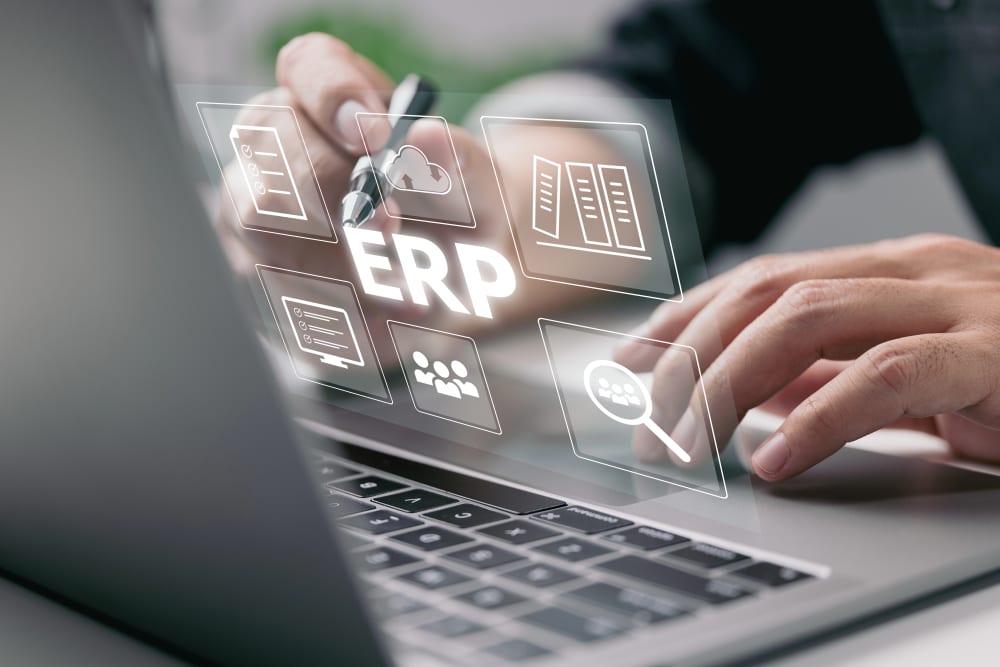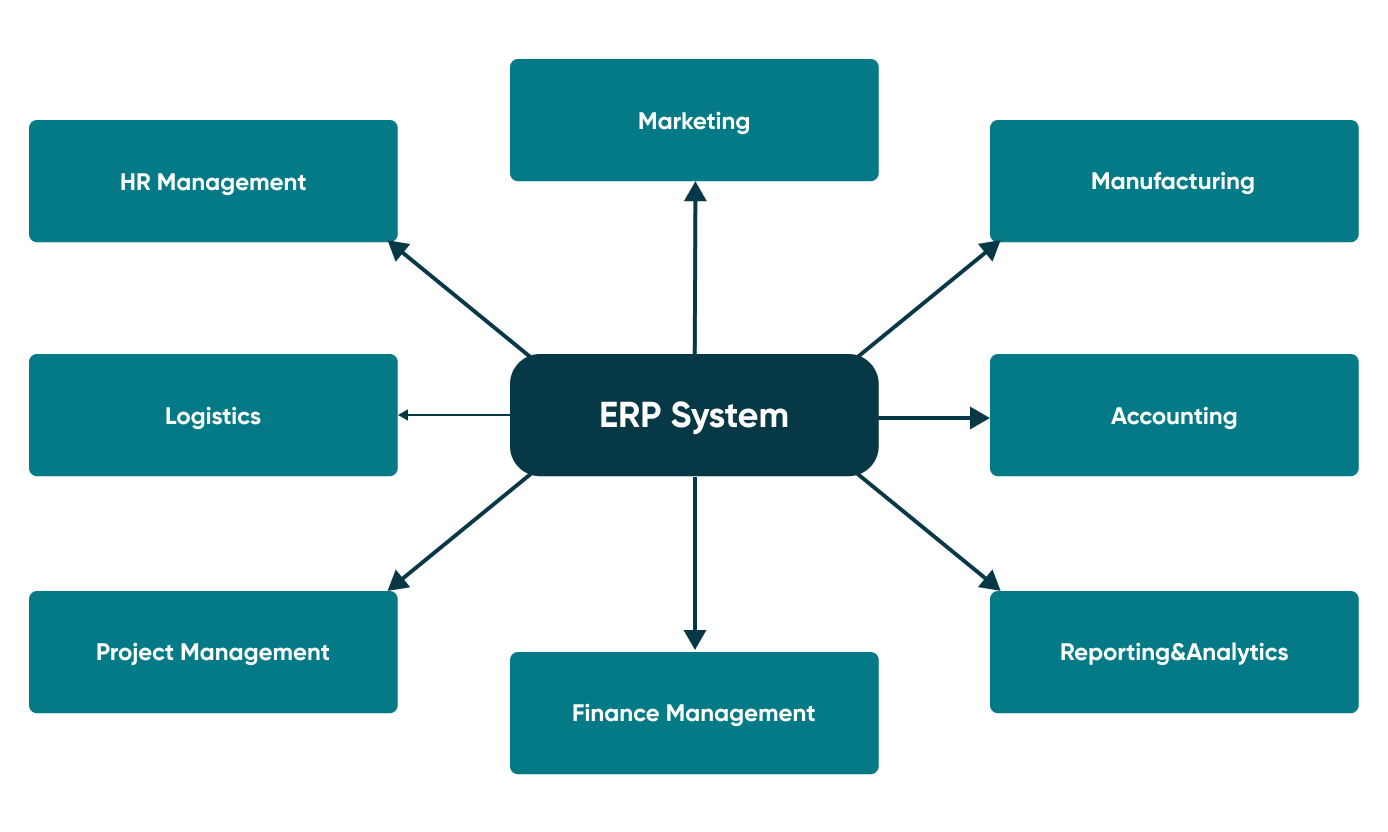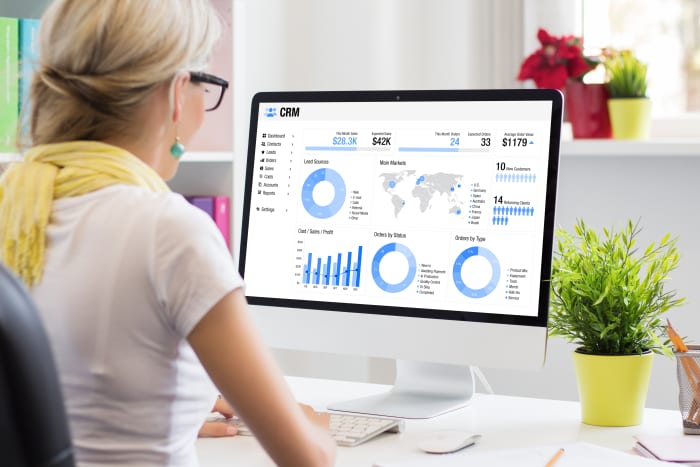Enterprise Resource Planning - An Effective Solution for Businesses


Modern life is becoming ever more digital. Companies keep pace by focusing on innovative technologies to improve processes, connect data, incentivise collaboration and reduce costs.
An Enterprise Resource Planning (ERP) system empowers business, manages high workloads, improves customer service, and helps it to outperform its competitors. It is an organisational strategy for the integration of processes such as production, operations, human resources management, and financial management. It is focused on the continuous balancing and optimization of business processes through a specialized integrated application software package that provides a common data model and processes for all areas of activity.
A successful company usually needs an ERP. Otherwise, there is a risk of inefficient and uncoordinated operations, poor customer service, and expensive and outmoded systems.
The Effect of an ERP System
An ERP system regulates and coordinates processes within all sectors such as production, operations, finance, human resources (HR), purchasing and sales. It assists in the automation of working processes and the storage and transmission of sensitive data. An ERP system improves collaboration and decision-making based on good data and consequently improves business efficiency. It can cover many operations of a company in different departments.

Apart from the many benefits of the ERP system, there is bound to be a downside with problems within the ERP solution.
Inefficiency
Is the company’s data stored in various locations? Do you need to spend much time operating the data and opening different applications simultaneously? Even though your data is stored in some easy-to-use applications, it is inconvenient to reach?
An ERP system improves efficiency by creating a single data store, and operation process with better coordination between the company’s divisions.
Conflicting Software Applications
Have you noticed that some of your different software applications don’t work well together? Perhaps a new accounting software is incompatible with an old logistics system. Conflicting software for various business operations creates the risk of inaccurate data.
An ERP system integrates all functions into a centralised system which provides accurate and coordinated data.
Information Access Problems
Is it hard to gather business information within your company? Is it difficult to create reports?
An ERP system uses a single database and applies a holistic approach to all business processes within your company.
Outdated Manual Processes
Do you spend an excessive amount of time entering data, copying it to other systems and checking the information?
An ERP system simplifies, coordinates and automates tasks.
Complex IT Processes
Are there different applications for running the business? Are there problems after updates and upgrades?
An ERP software has one centralised system which is easier to sustain. With a cloud-based ERP system, there is no need to worry about updates and upgrades as they become your IT contractor’s responsibility.
Types of ERP Systems
There are two main types of ERP systems: ready-made and custom-built.

A Custom-Built ERP System
A custom-built ERP system is created to suit a company’s specific processes and needs. It is more expensive but it works more effectively and efficiently and will generate better performance and higher productivity.
There is compatibility with many applications, although integration with existing software is sometimes not possible. The IT contractor creating your ERP system should analyse your business demands taking into account the actual status of the market. A set of tools will be built which will keep the system up to date.
A custom-built system requires time for research and discovery, development, and testing. The build price will depend on how sophisticated a solution is needed. A custom-built ERP system is expensive but certainly lucrative. Although one part of the ERP system could cost about $100,000, the cost will be paid off in the coming years, improving the interaction within a company and helping to outperform competitors.
Unlock Success with Premium Software Development
Contact us


Go Wombat’s ERP Expertise – Case Example
Go Wombat has first hand expertise in ERP systems. An example was in building an ERP system for a big manufacturing company. The company had an ERP system that was outdated and slow and needed renovation.
The client needed an update on the part of its ERP system that interacts with distributors and dealers. The existing system took 20 minutes to process a request; the updated system reduced that time to just 1 minute!

This adjusted ERP system was based on a web application that allowed company customers to interact with the provided information more efficiently.
The ERP system was created in Python using Django and DRF. Python was chosen because it allows to write the code quickly and debug it. The technology is simple and clear which saves development time. Django is one of today’s most popular frameworks with a lot of features that don’t exist in other programming languages.
Go Wombat deployed the software onto an AWS instance. It was a modern stack where the company cloud ran the static HTML through an S3 bucket. We used an EC2 server, RDS, SES and S3 for the data storage. We used React JS and Redux-Saga for frontend development.
Our team of seven IT specialists spent 8 months working on this project from the discovery phase to the deployment.
It was a project we implemented for an American company which was highly satisfied with the result of our work. The feedback can be found in our profile on Clutch. For more information visit Our Expertise.
Choosing Go Wombat for ERP
Go Wombat has expertise in thinking through the architecture of the applications. We can change one part of an ERP system by updating the information infrastructure of a company. It is possible for us to integrate with an existing system without breaking the current processes.
Out tips on building an ERP system include:
- Don’t build the entire ERP system at once.
- Start with the most important and beneficial part.
- Each part should be launched, developed and tested separately as every part must be independent.
- Use a cloud server.
- Pay attention to data security.
How can we help you ?






